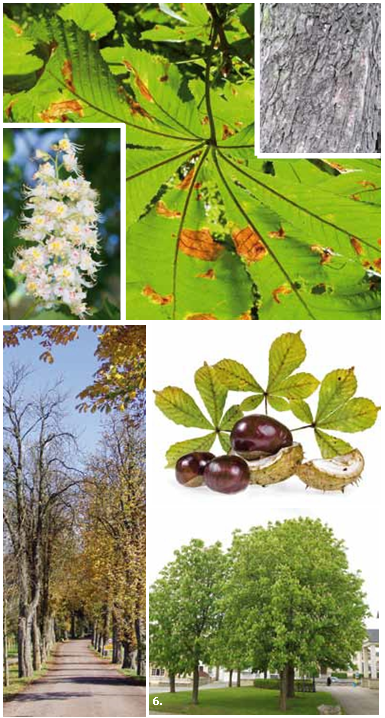Aesculus hippocastanum

Aesculus hippocastanum
Marron d'Inde, Marronier commun
Rosskastanie
Horse Chestnut
Käschtebam
Size:
Horse chestnuts are mighty trees up to up to 25 m high, which provide dense shade. They only form a relatively short trunk.
Leaf:
The leaf is palmately pinnate with 5-7 individual leaflets and grows up to 25 cm long. The autumn colouring is insignificant. Horse chestnuts often lose their leaves already in summer because they are damaged by insects or fungi. In this case, the foliage should be burnt.
Flower/Fruit:
The upright cone-shaped panicles appear shortly after the leaves shoot, are white with yellow-red spots. The tree flowers from about the 10th year of growth. The brown chestnuts grow in spiny capsules that burst into 3 parts when ripe. They are inedible.
Wood:
The wood is inferior as it is hardly durable and coarse-grained, soft and sometimes spongy.
Trivia/Use:
The root system grows shallowly across the width and can therefore quickly lift pavements and paths. Humic, nutrient-rich soils are preferred to sandy ones. The horse chestnut is sensitive to road salt. Some of the branches become brittle with age. Improper pruning leads to rotting and cavities.



